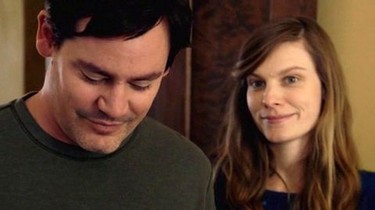The Sideways Light – A Haunting Meditation on Memory and the Unseen
The Sideways Light (2014), written and directed by Jennifer Harlow, is a slow-burning, atmospheric psychological drama that blurs the lines between memory, perception, and the supernatural. Set within the confines of a shadowy, aging house, the film unfolds as a haunting exploration of dementia, grief, and the fragile boundary between the living and the dead. With its poetic tone and eerie ambiguity, it offers an intimate portrayal of emotional disorientation through the lens of a family in quiet crisis.
The story centers around Lily (Lindsay Burdge), a woman who returns to her childhood home to care for her ailing mother, Ruth (Annalee Jefferies), whose memory is rapidly deteriorating. As Ruth slips further into a confused state, the house itself begins to echo with strange occurrences. Lily starts to sense an elusive presence — whispers in the halls, doors that seem to move, shadows that dance just out of sight. What begins as the everyday tension of a caregiver gradually spirals into a deeper mystery, as Lily confronts buried memories and unanswered questions from her past.
Harlow’s direction is restrained and patient, allowing the atmosphere to speak louder than overt horror tropes. The film doesn't rely on jump scares or special effects; instead, it builds unease through subtle imagery, half-seen movements, and the emotional decay of its characters. The cinematography uses dim natural light and soft focus to capture a dreamlike quality, emphasizing the house’s shifting sense of time and space. The title itself — The Sideways Light — refers to the soft, low light of dawn or dusk, when everything seems slightly altered, reflecting the film’s themes of perception and reality bending under emotional weight.
Lindsay Burdge delivers a nuanced, quiet performance as Lily, portraying a woman caught between caring for a mother who is disappearing mentally and confronting her own fractured identity. Her internal struggle becomes the film’s emotional spine, as she tries to make sense of the eerie synchronicities around her. Annalee Jefferies is heartbreaking as Ruth — confused, vulnerable, and occasionally terrifying as fragments of her consciousness emerge in moments that feel both lucid and unearthly.

Rather than offering easy answers, The Sideways Light lingers in ambiguity. Is the house truly haunted, or are the ghosts merely metaphors for fading memory and unresolved trauma? The film invites viewers to consider how much of the supernatural is a projection of our own emotional shadows — the things we bury but never forget.
At its core, The Sideways Light is about the fear of forgetting and being forgotten. It explores how memory can haunt more powerfully than any spirit, and how love — fractured, painful, imperfect — can linger in the walls long after time has passed. For viewers who appreciate subtle, meditative storytelling and psychological depth over traditional scares, this film is a quiet revelation — eerie, sorrowful, and beautifully human.



